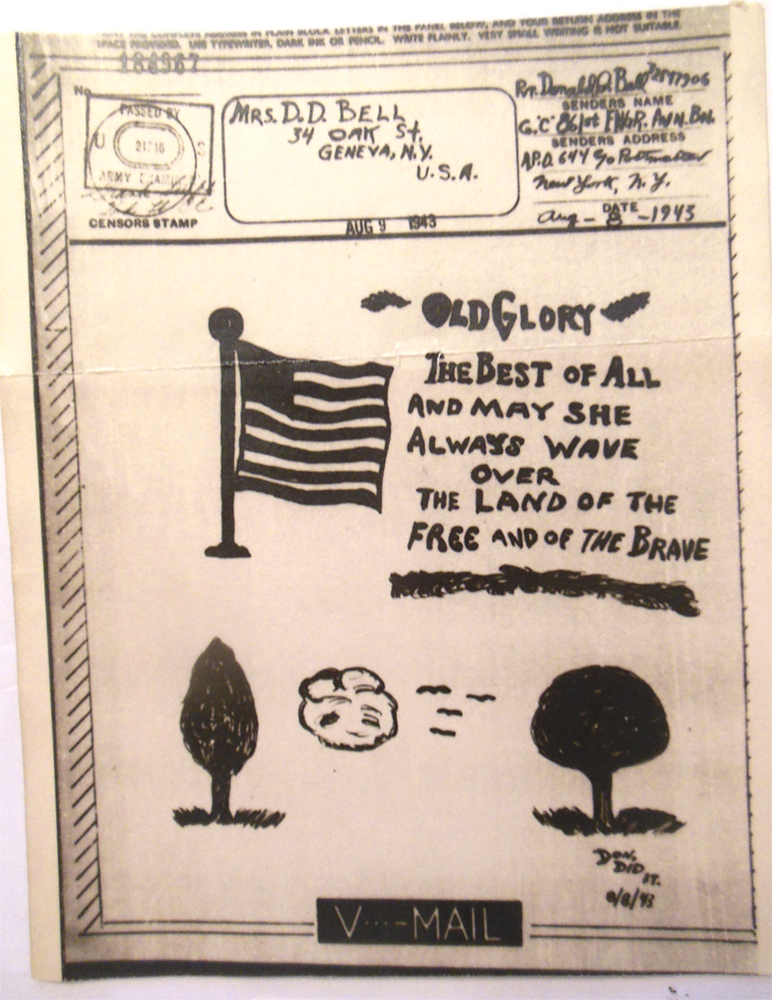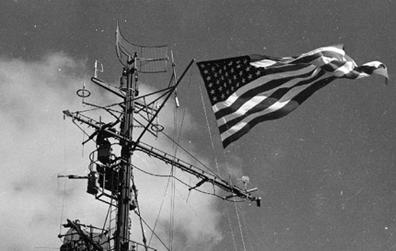Flags of patriotism, sorrow and victory
By James Breig
In August 1943, as World War II reached its midpoint, a soldier stationed in England sent a letter to his mother in New York State and adorned it with a crudely drawn American flag.

For reasons unknown to anyone but him, Pvt. Donald Bell did not write anything about his life, England or the war across the Channel. Instead, he composed “Old Glory,” a two-line poem that went: “The best of all and may she always wave/over the land of the free and of the brave.” Below the fluttering flag, he added trees, a cloud and v-shaped birds in the sky, and then signed it “Don did it.”
What motivated his drawing and verse is lost to history, but Bell was not alone in remembering the flag 70 years ago. For example, reflecting on his stint as a boatswain’s mate, a Seattle man recalled his saddest duty, carried out when a soldier who was being transported died on board.
“We buried him at sea in the Navy tradition,” the sailor recalled, “which meant sewing a canvas bag over him and weighting [it]. I got some chain and an old block or something and put [it] in the foot of the canvas bag. I had to sew the bag up. Then you put him on a slab, put a flag over him and, after you have said your farewell, you tip the board, and they slide off into the ocean….He just almost went in without a splash.”
When the war ended on VJ Day in August 1945, another Army private found himself aboard another ship as it headed toward what would have been the invasion of Japan. Instead, he and his fellow soldiers were spared.
In a jubilant letter to his girlfriend, he wrote: “The events of the past two days have brought about the day we’ve all prayed for. Now we can look forward to the happy reunions that are to follow in the near future.”
 He described “a lot of kidding around [that] took place until all hours of the night. This morning, the ship was decorated with flags, and there were flag-raising exercises and also a prayer by the ship’s chaplain.”
He described “a lot of kidding around [that] took place until all hours of the night. This morning, the ship was decorated with flags, and there were flag-raising exercises and also a prayer by the ship’s chaplain.”
As a sign of patriotism, of loss and of triumph, the U.S. flag meant a great deal during WWII.
